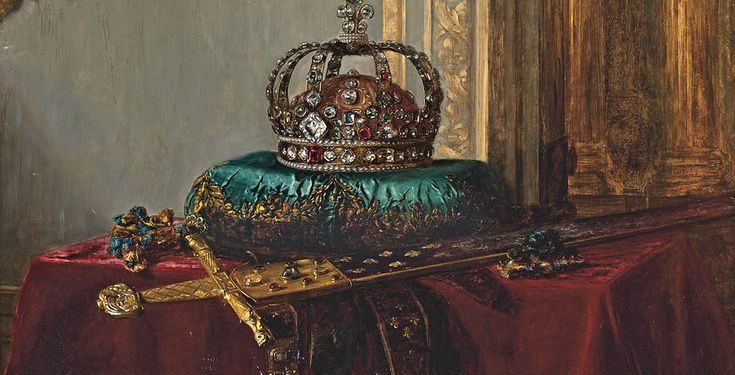Jakarta, Indonesia Sentinel — A collection of burial accessories and regalia belonging to European rulers from the 16th century has been rediscovered after being hidden for more than eight decades. The royal treasure, which includes a golden crown, rings, and other ceremonial items, had been missing since 1939 at the onset of World War II.
According to Live Science, the royal artifacts were found in the Vilnius Cathedral in Lithuania, where they had been hidden in a basement cavity beneath a staircase. On December 16, a team of experts located the treasures using an endoscopic camera to peer into cracks and crevices in the cathedral’s underground chambers. The discovery was officially announced during a press conference on Monday, January 6, 2025.
Mykolas Sotincenka, a communications coordinator for the Archdiocese of Vilnius, revealed that the treasure was originally collected in 1931 after flooding damaged the cathedral’s basement. At the time, experts recovered the coffins of three prominent 16th-century rulers, adorned in elaborate funeral attire.
Royal Treasure
The regalia included a golden crown belonging to Alexander Jagiellon (1461–1506), who was King of Poland and Grand Duke of Lithuania. Other items include a crown, chain, medallion, and coffin plaques associated with Elizabeth of Austria (1436–1505), and an array of artifacts linked to Barbara Radziwill (1520–1551), including her crown, scepter, orb, three rings, chain, and coffin plaques. Radziwill was recorded to be married to Sigismund II Augustus, King of Poland and Grand Duke of Lithuania.
The Jagiellon and Habsburg dynasties, to which these rulers belonged, were among Europe’s most powerful families and ushered in Poland’s Renaissance, often referred to as the “golden age,” according to Sotincenka.
“The funeral regalia of Lithuania’s and Poland’s monarchs are invaluable historical treasures,” said Archbishop Gintaras Grušas of Vilnius in a statement.
Read also : Scientists Discover Preserved 50,000-Year-Old Baby Mammoth in Siberia
A newspaper dated September 1939 was wrapped around the royal artifacts before they were hidden in a niche beneath the cathedral staircase. While historical records suggested the existence of this cache, multiple attempts over the years had failed to uncover its exact location until now.
“These symbols are important to the state and to all of us. They are a source of strength,” said Rita Pauliukevičiūtė, director of the Vilnius Church Heritage Museum.
The discovery of the royal treasure sheds light on a significant chapter of European history and preserves the legacy of some of its most influential rulers.
(Raidi/Agung)

























